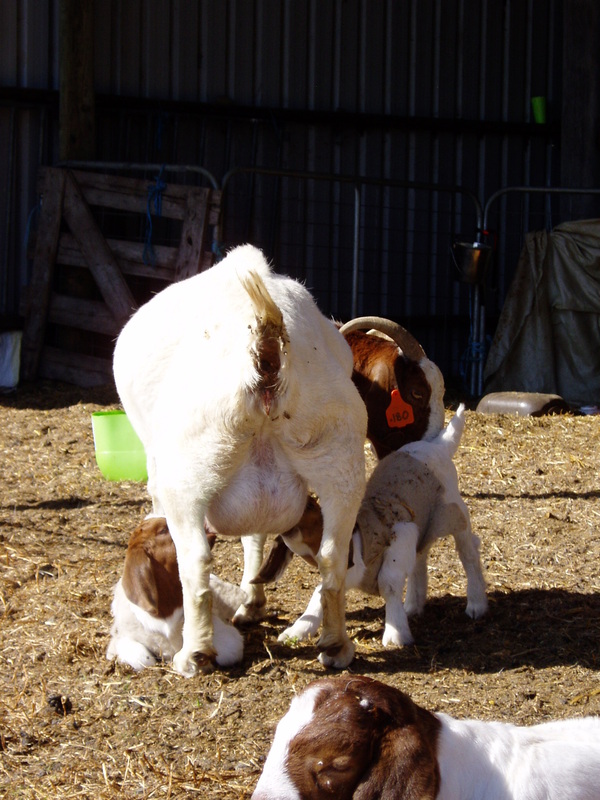For serious goat breedersThis page has been included to provide additional technical discussions and resources for the more advanced breeders and those who have a particular interest. Please note the comments and value score are my personal opinions. If you would like to comment or ask a question, please contact us on 0429661369 or email cadenzaboers@bigpond.com
Carole Axton Came across this discussion on Web Boss website. They asked "informed" people whether tape-worm in sheep should be treated as there is considerable difference of opinion whether they have any production effects. I suspect the same answers would be given for goats, so have a look:http://www.wool.com/Grow_WormBoss_Current-news.htm
|
A.I. Training program for breeders. Just to let breeders know all five places in the Goat Breeders one day A.I. course with Peter Lynch at Cadenza Boers in Gippsland have been been taken for Saturday 9th February. We are most grateful to people for their support of this program including participants travelling from as far away as NZ to participate.
|
Are your goats at risk for Liver Fluke - how to identify the host snails.Lloyn.J., Boray, J., & Campbell, N. Primefacts, June 2007. DPI NSW
A great article with clear explanations and photographs of the snails involved. While a lot of the offending snails look the same, this has some simple explanations of how to identify them My value as a resource is 8 out of 10.
Information on "milk goiter"
This article is written by a scientist and throws light on the neck lumps in milk kids...not necessarily an iodine deficiency http://www.goatbiology.com/milkgoiter.html | ||||||
The best report on worm issues I have read.
| |||||||||||||
| nz_worm_report.pdf | |
| File Size: | 943 kb |
| File Type: | |
Here are some papers that may be of interest to goat producers and those that sell goat meat.
This paper looks at the measured differences between young goat and older goats. Looks at moisture, fat, and protein makeup etc. Interesting reading.
http://www.pjbs.org/pjnonline/fin1533.pdf
This paper looks at the measured differences between young goat and older goats. Looks at moisture, fat, and protein makeup etc. Interesting reading.
http://www.pjbs.org/pjnonline/fin1533.pdf
The best article on heritability of colour in goats.
Author. D.P. Sponenberg. (year?) Virginia-Maryland Regional College of Veterinary Medicine, Virginia Tech, Blacksburg VA 24061
While I thought I knew something about heritibility of colour in goats, this article is an absolute eye opener. I really had no idea it was primarily not the colour of the coat that was the major indicator, but the colour of the skin that told you most about the genetic makeup of the end visual colour. I really liked the discussion on the colour of the Boer goats as the "trick" they refer to, and this explains why we often see red tails, belted Boers and partially coloured Boers, but rarely a black one. Once again a very thorough scientific article.
My value as a resource 9 out of 10
| goat_color_explained_copy1.pdf | |
| File Size: | 33 kb |
| File Type: | |
Please feel free to contact us: cadenzaboers@bigpond.com phone 0429661369


